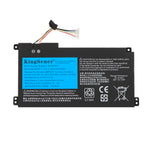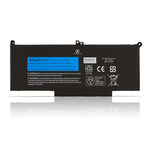You have no items in your shopping cart.
Can I leave my Inogen plugged in all the time?

How Inogen Oxygen Concentrators Work
The battery life of the Inogen oxygen concentrator is limited and cannot be used indefinitely, even if it is continuously connected to a power source. The battery capacity and frequency of use will affect its use time, but a fully charged battery can generally last for several hours. If it is continuously connected to a power source, the battery may overcharge, which will shorten the battery life.
The working principle of Inogen oxygen concentrator is to use compressed air and separate oxygen through molecular sieve. Long-term continuous operation may cause the device to overheat, affect the performance of the device, and even cause safety hazards.
Let us be clear: Inogen oxygen concentrators are not designed to be connected to a power source continuously. Even when connected to a power source, it is recommended that you periodically disconnect the device from the power source and allow it to rest for a period of time to ensure that it is functioning properly.
The lithium-ion battery in the Inogen oxygen concentrator can be charged via the power adapter and usually takes 4-6 hours to fully charge. Charging time may vary depending on factors such as battery capacity, remaining power and ambient temperature.
To ensure battery life and safety, it is recommended to use the original power adapter provided by Inogen for charging. Using a non-original adapter may damage the battery or cause safety hazards.
During the charging process, the indicator light on the power adapter will light up to indicate that charging is in progress. When the battery is fully charged, the indicator light will turn off.
To extend the battery life, it is recommended that you charge the battery promptly after each use and avoid exposing the battery to high or low temperature environments for a long time.
In addition, there are a variety of optional batteries on the market , such as batteries with extended battery life and portable chargers, to meet the needs of different users .

50% NEW Battery for Inogen G3 (OxyGo) BA-300 92Wh Single Battery
Effects of being constantly connected to a power source
These devices are usually equipped with batteries and are designed to provide a certain period of independent use to meet the user's travel needs. Continuous connection to a power source may have the following negative effects on the device:
Shortened battery life: Continuously connecting to a power source will cause the battery to be in an overcharged state, which will accelerate battery aging and shorten its service life. The battery's capacity will gradually decrease, and eventually the device will not work properly.
Impact on device performance: Continuously connecting the power source may cause the internal temperature of the device to rise, affecting the stability of its internal components and causing performance degradation. For example, the output flow of the oxygen concentrator may decrease or even malfunction.
Increased safety risks: Leaving the device connected to a power source for a long period of time may increase the risk of overheating or short circuiting, resulting in fire or other safety accidents.
Waste of energy: Being continuously connected to the power source consumes a lot of power and causes energy waste.
Reduce the portability of the device: Continuously connecting to a power source will limit the device's usage scenarios and fail to meet the user's travel needs.
Warranty duration and coverage
The battery warranty for Inogen oxygen concentrators is typically one year from the date of purchase. During the warranty period, if the battery fails, Inogen will provide a replacement battery free of charge. It is important to note that warranty terms may vary slightly depending on the product model and place of purchase, and users are advised to carefully read the product manual and proof of purchase for detailed warranty information.
Common faults covered by warranty:Inogen's battery warranty generally covers the following common faults:
Reduced battery capacity: The battery is no longer able to provide enough power to keep the oxygen concentrator functioning properly.
Battery Charging Problems: The battery does not charge properly or takes too long to charge.
Battery overheating or overcooling: Battery overheating or overcooling may cause battery damage.
Failures not covered by warranty:It is important to emphasize that Inogen's battery warranty does not generally cover the following:
Battery damage caused by misuse or abuse: for example, exposing the battery to extreme temperatures, using non-original chargers, over-discharging, etc.
Battery damage caused by accidents or natural disasters: for example, falling, collision, water ingress, etc.
Normal battery wear: Batteries have a limited normal service life and their capacity will gradually decrease over time.
How to maintain to extend service life
To extend the life of your Inogen oxygen concentrator and ensure its safe operation, we recommend that you follow these recommendations:
Use the oxygen concentrator according to your actual needs and replace the batteries regularly.
Do not use the device continuously for a long time. It is recommended to disconnect the power supply regularly to let the device rest.
Clean and maintain the equipment regularly and operate it according to the instructions.
If the device fails, please contact professional maintenance personnel for repair in time.
If this article still doesn't help your laptop battery, you can buy a new battery at BatteryMall.com
If you want to learn more about batteries, please visit:BatteryMall.com/blogs/support








